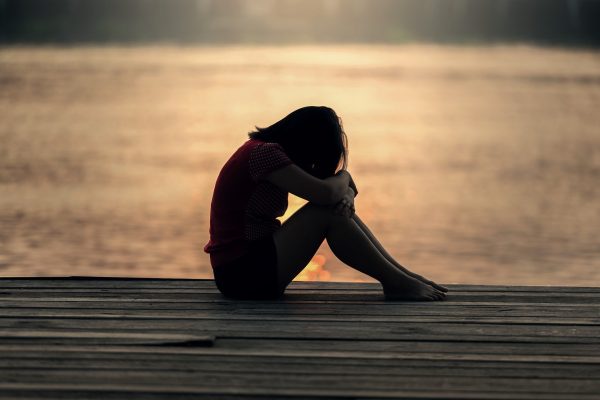
This past Sunday the New York Times reported that Las Vegas was reopening its schools, despite the ongoing threat of covid-19, in response to a “surge of student suicides.” Educators and parents shared concerns that school closures have left young people isolated, hopeless, and vulnerable, but this action was a real clarion call. Conversation about the link between school closures and adolescent suicide is politically charged and the recency of covid and virtual learning leaves us without strong evidence to assess this situation. However, sociology has long been interested in suicide, and social science offers us important tools for considering the nature and causes of adolescent suicide.
In a classic sociological work, Émile Durkheim examined suicide as a social fact, exploring how suicide was caused by social, rather than individual, forces. In particular, Durkheim attributed rates of suicide to differing levels of “integration,” or social belonging and inclusion, and “moral regulation,” or external monitoring, oversight and guidance in communities. Durkheim’s work is particularly relevant when considering the link between school closures and adolescent suicide. Adolescents may be missing the sense of belonging, and the external oversight from trusted adults, that the school environment can provide.
- Émile Durkheim. 2006. On Suicide. London ; New York: Penguin Books
Contemporary sociologists are reexamining the relationship between integration, regulation, and suicide in light of changing social institutions. For instance, sociologists have examined how, in a community valuing high academic achievement and discouraging professional psychological support, adolescents’ integration and regulation may leave them vulnerable to intense feelings of academic failure that put them at-risk for suicide.
- Anna S. Mueller and Seth Abrutyn. 2016. “Adolescents under Pressure: A New Durkheimian Framework for Understanding Adolescent Suicide in a Cohesive Community.” American Sociological Review 81(5):877–99.
The news media is reporting that school districts are experiencing “suicide clusters” since the lockdowns, instances where several individuals connected by social relationships all commit suicide. This may not be quite as unusual or unexpected as it sounds. Social scientific research supports the idea that suicide might be “contagious,” in that certain peer relationships can increase suicidal ideation among individuals connected with someone who committed or attempted suicide, or experienced thoughts of suicide. This contagion effect is particularly strong for adolescent girls.
- Seth Abrutyn and Anna S. Mueller. 2014. “Are Suicidal Behaviors Contagious Adolescence? Using Longitudinal Data to Examine Suicide Suggestion.” American Sociological Review 79(2):211–27.
Social media is one way that knowledge of friends’ or peers’ suicidal ideation or suicide attempts can spread. It is this knowledge (rather than expressed negative emotion) that contributes to the “contagion” effect. Media, such as news reporting or television shows, can also “suggest suicide” to adolescents. However, the nature and strength of the relationship between media reporting and suicidal thoughts and behaviors warrants further research. Overall, the potential for suicide contagion suggests that media, social scientists, and social networks need to use caution when discussing, and reporting on, suicide
- Anna S. Mueller and Seth Abrutyn. 2015. “Suicidal Disclosures among Friends: Using Social Network Data to Understand Suicide Contagion.” Journal of Health and Social Behavior 56(1):131–48.
- Florian Arendt, Sebastian Scherr, Josh Pasek, Patrick E. Jamieson, and Daniel Romer. 2019. “Investigating Harmful and Helpful Effects of Watching Season 2 of 13 Reasons Why: Results of a Two-Wave U.S. Panel Survey.”Social Science & Medicine 232:489–98.
Sociologists can also describe, and explain the cause of, disparities in suicide risk according to gender, race, and socioeconomic status. For instance, research suggests that higher rates of suicide among adolescents living in poorer communities may result from differential exposure to violence or lack of safety. Higher rates of suicide among Native American youth may result, in part, from frequent racial misclassification, denying these youth access to racial pride and racial support networks. There are especially high rates of suicide among LGBTQ youth, and LGBTQ youth report higher levels of suicidal ideation. However, despite media coverage of the relationship between sexual orientation, bullying, and suicide, there is not clear evidence that experiencing bullying more frequently is associated with greater suicidal ideation.
- Muhammed Yildiz, Emirhan Demirhan, and Suheyl Gurbuz. 2019. “Contextual Socioeconomic Disadvantage and Adolescent Suicide Attempts: A Multilevel Investigation.” Journal of Youth and Adolescence 48(4):802–14.
- Mary E. Campbell and Lisa Troyer. 2007. “The Implications of Racial Misclassification by Observers.” American Sociological Review 72(5):750–65.
- Matt Wray, Cynthia Colen, and Bernice Pescosolido. 2011. “The Sociology of Suicide.” Annual Review of Sociology 37(1):505–28.
- Anna S. Mueller, Wesley James, Seth Abrutyn, and Martin L. Levin. 2015. “Suicide Ideation and Bullying Among US Adolescents: Examining the Intersections of Sexual Orientation, Gender, and Race/Ethnicity.” American Journal of Public Health 105(5):980–85.
For all that we know, individual suicides still often defy understanding. However, working together, social scientists can help explain the complex causes of suicide and, especially, suicide risks and rates. This is particularly important to consider for adolescents. Although media reporting is now focused on the relationship between school closures and suicide among young people, the reality is that rates of adolescent suicide have been increasing over the past decades. Concern for youth suicide is not new. This calls for careful attention to how social scientific tools can contribute to understanding of this complex problem.
- Jean Stockard and Robert M. O’Brien. 2002. “Cohort Variations and Changes in Age-Specific Suicide Rates over Time: Explaining Variations in Youth Suicide.” Social Forces 81(2):605–42.

Comments 1
Kristin Gehring — January 28, 2021
I really appreciated this thoughtful and well-written piece about a familiar concern in today’s unfamiliar environment!